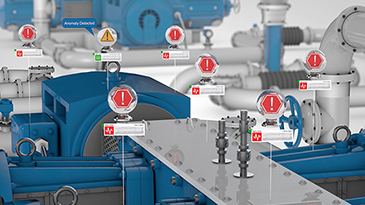Power generation has changed dramatically over the past 10 years:
- In the US, natural gas became the top generation fuel in 2016 with roughly 1.4TWh, which is almost double its generation in 2006.
- Emissions requirements and corporate renewable goals, plus fundamental market changes, have pushed the industry to shift the operation profiles of nearly all power generation assets.
- Facilities designed to be run at base-load without much dispatchable generation now need to be load-following to continue to make any money or attempt to break even on their financial commitments.
With reduced generation hours and revenue, the focus must be placed on lowering operations and maintenance (O&M) expenses to hit profitability and stakeholder goals.
With average maintenance expenses increasing 73 percent for fossil steam (coal plants) and 27 percent for natural gas power plants, there is a clear need to optimize when and why maintenance is performed. Outages due to standard scheduled or reactive maintenance are not the most cost-effective, and they impact potential revenue.
A few OEMs and service providers offer what seems to be a good deal and exactly what the customer requested, but when the machine or asset is open and new issues are found, the cost of the outage skyrockets. When the customer is the most vulnerable, the provider extends the outage, pushes potentially unnecessary part replacements and increases the price with service add-ons.
The OEMs recommended preemptive maintenance and inspections as a great way to extend the life of an asset, but do they align to your plant’s operation, market or business goals? Numerous factors such as fuel type, fuel mix, peak load, steam injection, cyclic operation, start methods, trips and shutdown methods all affect how turbine parts wear.
Typical inspections look for issues with cracking, abnormal wear, oxidation/corrosion, clearings limits, missing parts, nozzle deflection, cooling hole plugging, leaks and coating wear. With standard intervals of 24,000 hours or 1,200 starts, issues may not align to every turbine, and therefore the optimal life of asset parts may not be utilized.
Optimizing power equipment life and extending outage intervals can be accomplished with prescriptive analytics based on machine learning and multivariate analysis. With Autonomous Agents™ and reliability management, you have the power to determine whether to replace parts or assets that have reached their “end of life” or those that are no longer covered or supported by the OEM. You can also confidently know:
- When an asset is impacting output, efficiency, availability, flexibility or emissions
- What specific asset or part is impacting plant performance
- How to adjust to operations, maintenance, outages and replacement parts strategy to achieve business KPIs
- When to adjust operations to align to current market, weather, regulatory, fuel or financial conditions while focusing on asset life
- That your business KPIs align to suggested OEM part replacement schedules or recommended service plans
Ensuring your power plant is operating at the market and operating levels required is crucial to the stability of your generation assets and the grid. Using predictive and prescriptive analytics is the new norm in confidently managing positive outcomes.
To learn how other industries can learn from combined cycle power plants, check out our recent white paper Optimizing Efficiency and Profit: Lessons for Combined Cycle Power Plants from Other Industries.






Leave A Comment